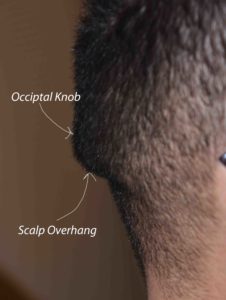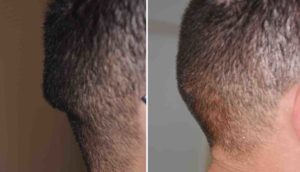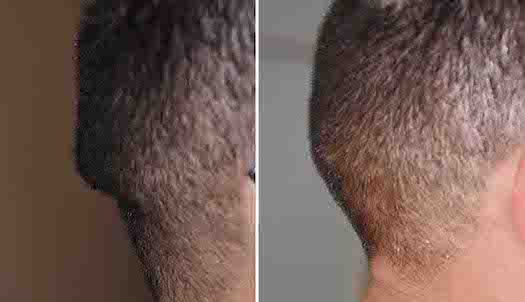Background: The occipital knob is a visible prominence of bone that is situated in the center of the back of the head at the bottom of the occiput. While it is a feature of a normal occipital skull, known as the inion, it is unknown why it grows excessively and becomes a visible bulge. While it likely occurs in both men and women, I have seen men present for treatment undoubtably due its exposure with shorter hairstyles. Patients tell similar stories about when they observed its presence and it was always long after puberty. They were not born with it nor was it seen in their childhood or early teenage years.
The occipital knob is often confused with the occipital bun which is a much larger protrusion of the entire lower central occiput and is not just the knob proper. The bun may be associate with nuchal line protrusions which radiate out from the central bony protrusion. This is not a feature of the occipital knob
Occipital knobs can present in a variety of sizes. Some are small and fairly discrete while others can get quite large. The larger the bony protrusion the more likely there will be an excess of overlying scalp skin once it is reduced. This may require some excision of the superior scalp excess to ensure a smooth external contour.



Case Highlights:
1) The occipital knob skull deformity is a central projection of bone that sticks it at the bottom of the occiput.
2) In some cases the occipital knob is associated with an excess of scalp tissue that should be concurrently removed. (scalp tuck)
3) A smooth occipital contour in side profile is the goal of occipital knob skull reduction.
Dr. Barry Eppley
Indianapolis, Indiana




